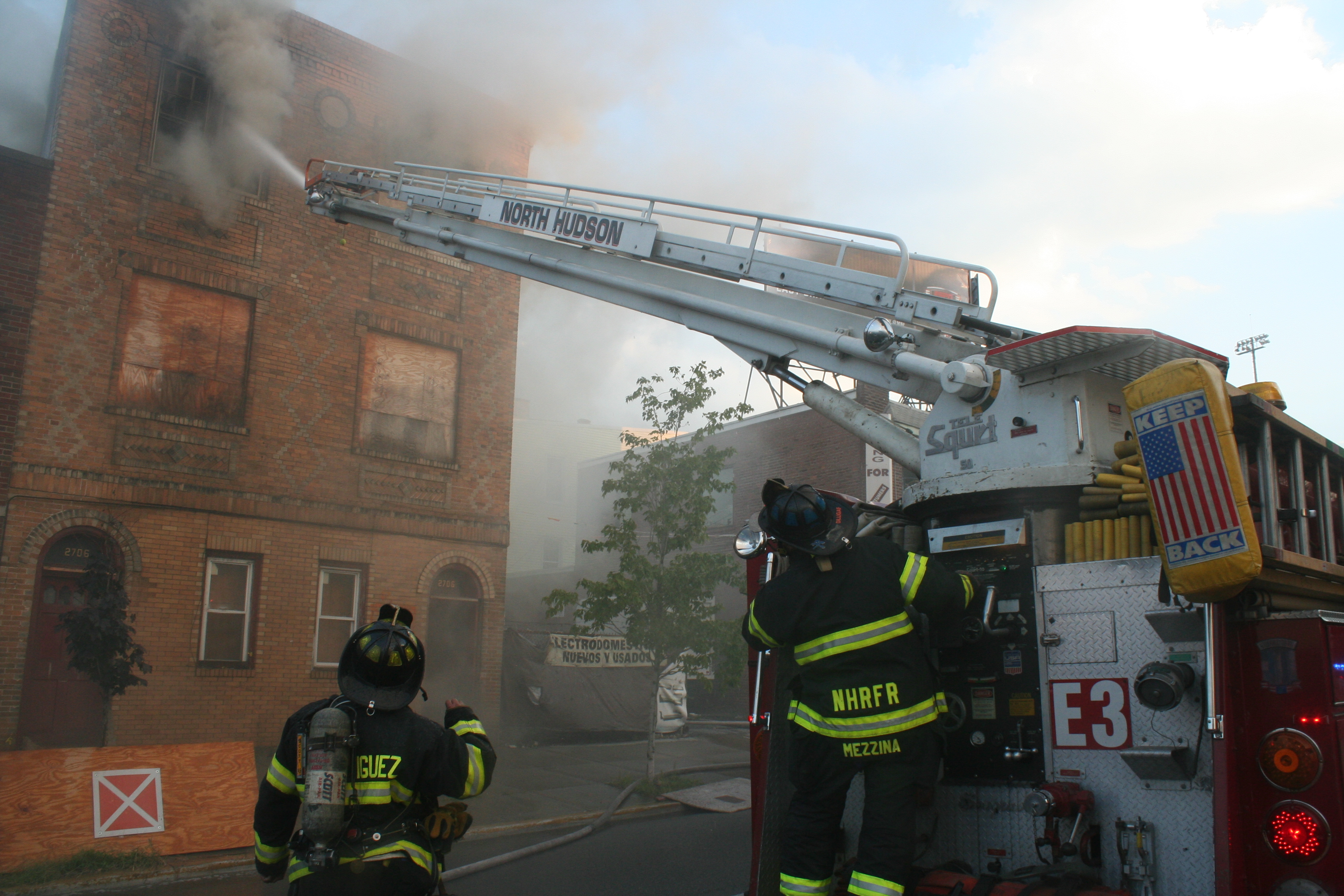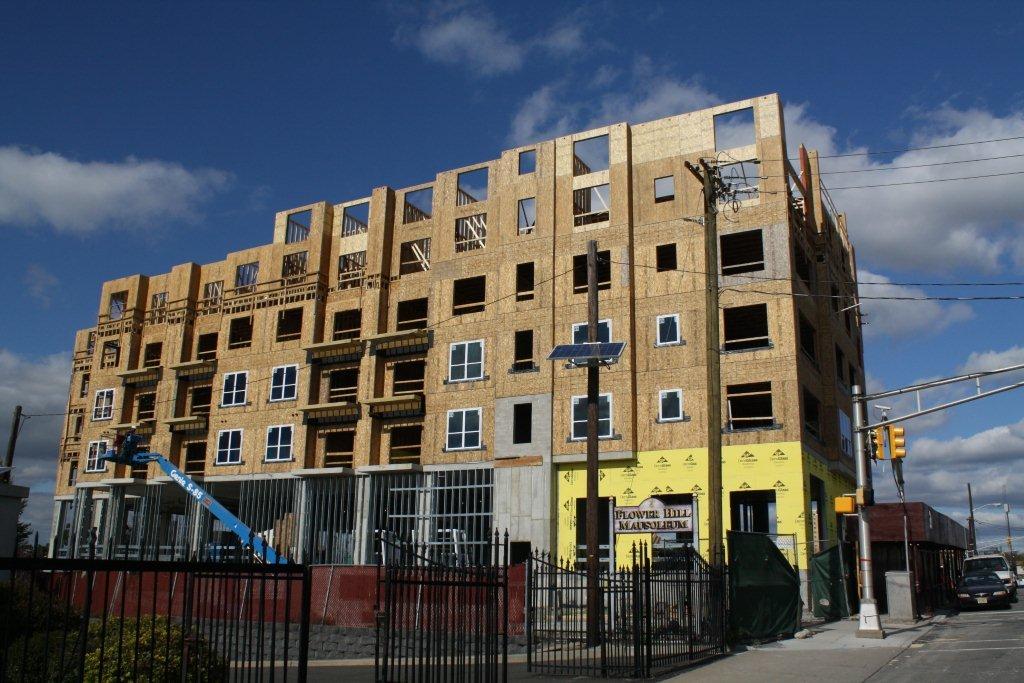By Anthony Avillo
Our work demands that we understand the arenas in which we play this game: the structures. If we know how a structure was put together, we could understand not only how fire spreads in it and the tactics required to tame the building and address the fire but also, most importantly, how it falls apart under the assault of fire. To be inside, on top of, or around the perimeter, especially at the front and in command, and to have an inadequate understanding of building construction is like playing Russian roulette with your personnel. Regardless of rank, a lack of understanding of building construction and its inherent weaknesses is unacceptable and will lead to a tactical breakdown at some point.
Buildings have changed over the years, and we must change with them. We must understand that when the aggressive tactics we were taught are used all the time, the same way, we will eventually put ourselves and our people in a compromising position. We need to recognize when the tactics of old do not fit into the game plan of the fire building. Aggressive tactics worked for many years, in what some call the “legacy” construction, but this same aggression must now be tempered by a good size-up and an assessment of the dangers presented by these structures. First-arriving personnel almost always conduct the initial size-up and assessment. What they do in the first few minutes will make or break the operation. A good decision based on a sound size-up, an understanding of the building’s construction and inherent limitations, and a coordinated attack and support operation will usually create a favorable fireground experience. Bad decisions made according to the “one size fits all” mentality will continue to be a forum for firefighter casualties. Once an inappropriate course of action is chosen, it is nearly impossible to undo that harm that has been done.
Three building types that fit into the category above come to mind. They are especially dangerous when handled improperly. A seemingly “routine” fire in any one of them can give personnel more than they bargained for, especially if they are stuck in one mindset and do not adjust their strategy and tactics to address the limiting characteristics of each structure type.
Large-Area Structure
Whether it is a one-story warehouse or a five-story, old-style storage facility, we must not allow ourselves to operate in a fashion that is going to compromise the safety of personnel. Residential structure strategies and tactics just do not work here. We have seen many examples of this in the last decade, and we need to learn the lessons that have been well-documented by the line-of-duty (LODD) reports and near-miss submissions. Often, the dominoes begin to fall as the first hoseline is stretched, most often the result of an improper decision of the first-arriving company officer. Entering any large-area building with a small-diameter hoseline can put attack teams at a tremendous disadvantage for two reasons. The first is the length of the stretch that is likely needed. We can’t stretch 300 (or more) feet of small-diameter hose (especially with a fog nozzle) and expect to have a hose stream sufficient to provide proper suppression power for the British thermal units (Btus) being generated. Speaking of Btus, the second reason we need a larger hoseline is the typically larger fire loads in these structures. How many times do we have to say, “Big Fire = Big Water?” Incident reports have shown that stretching the small line in these instances has almost always had a negative impact on the situation.

(1) Not only is this structure a disorientation hazard, but the fire loading is severe. The building also happens to be class II construction. Fire will rapidly take hold of this area and severely affect the structural integrity of this building. Personnel who are inside this building with small-diameter hoselines or without lifelines are operating at a great risk. Don’t enter or allow your personnel to enter a structure like this unprepared for the hazards presented by both the fire and the building. (Photo by author.)
Additionally, ladder company personnel get into the act in an even more dangerous manner. For this reason, incident commanders (ICs) must demand and reinforce before the incident the use of lifelines in any structure that has a large area or a disorientation hazard as a matter of department policy. Firefighters in heavy smoke conditions often have difficult times finding their way out of 10-foot × 12-foot rooms in residential structures. Expand that room size exponentially, and you expand the risk even more exponentially that firefighters will not be coming back out without some type of umbilical to the safe exterior. This has also become apparent in the LODDs over the past decade. We have to reinforce discipline on a department level and ensure that small-area tactics are never introduced into large-area buildings.

(2) In a heavy smoke condition, what are the odds a firefighter is going to make it out of here without a life line in use? Chances are that decision will be made when you, a chief officer, are not yet on scene. If your people are not taking the bag off the apparatus when there is nothing showing, don’t expect them to do it when the place is on fire, especially if you do not say anything about it when nothing is showing. Safety requires perseverance. As a chief, you can’t lose that battle. (Photo by author.)
Vacant Building
Our track record in vacant buildings is poor at best. How is it that we have suffered as many as four times more LODDs in vacant buildings than in residential structures? With the exception of very few departments, we certainly don’t go to four times as many vacant building fires. One has to look at the root cause. It is not just that the buildings are unsafe but that we are treating them as normally occupied buildings that sets the stage for operational disaster. Unless there is an obvious life hazard, we must attempt to make the building behave a little before committing resources to any interior positions. This means checking all sides of the building, removing obstacles such as boards on windows and doors, and ensuring multiple means of egress from all areas. Take a very pessimistic approach in regard to the projected success of interior operations. Two items of concern must be noted here. The first is that if we are the only life hazard in and around the structure, our priorities must be focused more on our own safety than on saving a property. In addition, we have to be careful about what we are actually risking ourselves for. A good rule of thumb is don’t risk your neck tonight for something that will be going in a dumpster tomorrow. In addition, overhauling an unsafe structure has caused firefighter lives in the past. The philosophy should be, whether the building was vacant before the fire or not, that if the building will not be occupied again or for the foreseeable future, we should make a very careful assessment on whether we want to be conducting overhaul on the interior. We have also seen recent LODDs and injuries resulting from needless overhaul in dangerous buildings. Buildings can be rebuilt or torn down. Here are some guidelines for vacant buildings:
· Use a building marking system to identify unsafe structures.
· Be aware of the speed at which these fires can develop. The IC should never be surprised by this.
· Conduct a careful risk analysis in regard to the feasibility of interior operations.
· Increase supervision if operating on the interior.
· Ensure the area is well-illuminated both inside and out.
· Demand frequent progress reports from all areas, and treat the building with an extremely skeptical and pessimistic attitude.
· Ensure a tactical reserve—don’t let a “worthless” fire building catch you off guard in regard to personnel needs.
· Don’t risk your people’s necks today for something that is going in the dumpster tomorrow.
· This type of occupancy changes the rules of the game; play in accordance with the rules set by the structure and the fire.

(3) Note the hazardous vacant building no-entry symbol on the ripped off door at the bottom of the photo. The “X” in the box means, “No Go.” Defensive operations are being conducted. (Photo by Ron Jeffers.)
Structures with Lightweight Materials
This includes buildings that built with or renovated to contain lightweight building materials. Floor collapses are killing more firefighters than any other type collapse. In these structures, we cannot charge headlong into the fire area as we once did in older dimensional lumber or that new term “legacy” construction. These buildings do not stand up to the assault of fire like the older buildings did. We must immediately investigate for void involvement. If it is present, we must take appropriate steps to fight the fire from safe areas. These safe areas are based on the location and extent of the fire as well as the safe access (and egress) points we can identify. This operation can be from a protected doorway (cautious offensive), an adjacent structure or behind a fire wall (interior defensive), or from the exterior (defensive). This is, again, something that must be attended to through pre-ire planning, training, and constant reinforcement of the need to adjust tactics as required.

(4) Look at this monster. How are jurisdictions allowing buildings like this? This is all lightweight stick-built construction, including parallel chord floor and roof trusses. Although the apartments will be protected by a sprinkler system, the most vulnerable area in the structure, the voids (where collapses will be initiated), will not. Fire in a void here will cause the loss of a large portion, if not all, of the building. (Photo by author.)
In my classes, I often ask, “How, if you are not sure, can you determine if a building was constructed using lightweight materials?” The answers run the usual gamut from prefire planning to the building’s age to assuming, i.e., treat it as lightweight if you are not sure. Prefire planning is great, but we don’t preplan every building. Age is a good indicator, but there are always exceptions. Assumptions in this business are unacceptable and have led to disaster. To take some poetic license and paraphrase Chief (Ret.) Alan Brunacini, “A chief should be the first one to think a fire is burning and the last one to think it is out.” To turn the phrase a bit, we can state, “The first-arriving officer (and the IC) should be the first to think that lightweight materials are involved and the last to think they are not.” Accordingly, the sure way to find out if lightweight construction is present is to CHECK. Physically checking the building is the only surefire way to determine this. Punch a hole in a ceiling, or lift a ceiling tile (in an uninvolved area of course). This action will tell you right away if there are lightweight support materials in the floor and/or roof systems so you can adjust your action plan. For us to assume anything in this business is unacceptable. We must always be sure so we can make better and safer decisions.
Analysis of the tragedies that have occurred in these occupancies and buildings points to a root cause most often attributed to the lack of supervision by chief officers before, during, and after the incident as well as a lack of awareness, training, and complacency on the part of the first-arriving companies. Although decisions are often made in a split second, the adjustments that need to be made on the fireground to address improper initial action may take more time to accomplish than the (IC) has, making the scene unsafe and causing a delay in proper operations. It is very difficult to undo improper actions on the fireground, and it almost always involves an increased degree of danger.
Once identified, these mistakes cannot be overlooked, brushed aside, or chalked up to experience that is never discussed further. It must be addressed in as immediate a fashion as possible, and its lessons must be disseminated to all personnel. Failure to recognize when the building has changed the rules of the game and to operate in a proper manner in regard to those changes is not only a training issue; more importantly, it is an expectations issue.
Departments and chief officers must set expectations based on sound policy in regard to how companies conduct themselves in these structures. Chief officers who do not relay their expectations to their subordinate officers are usually the reason that the first-arriving officers do not operate in the safest and most appropriate manner. If the expectations are not communicated properly; documented somewhere in department policies or standard operating procedures; and most importantly, enforced through active supervision, then the chief officers have no one to blame but themselves when things go wrong on their fireground. As a chief, tell them what you expect, make sure they have the resources to do it, and then reinforce it on a consistent basis. If you don’t tell your companies and how you expect them to operate, don’t expect it to happen in the fashion you intend. Their proper actions before you arrive, based on the expectations you set, will make it easier for you to manage the incident once you get there. As a chief officer, it is your responsibility to make sure that the job is done properly and safely, even (and especially) when you are not there yet.
Anthony Avillo, a 30-year veteran of the fire service, recently retired is a deputy chief in North Hudson Regional (NJ) Fire & Rescue, where he was assigned as 1st Platoon Regional Tour Commander. He has a B.S. in fire science from New Jersey City University and is an adjunct professor at the University, teaching fire science and developing curriculum. He is an instructor at the Monmouth County (NJ) Fire Academy. Avillo, an FDIC instructor, is a member of the FDIC advisory board and is an editorial advisory board member for Fire Engineering magazine. He is the author of Fireground Strategies, 2nd edition (Pennwell 2008) and Fireground Strategies Workbook Volumes I & II (Pennwell, 2002, 2010). The third edition of Fireground Strategies was released at FDIC 2015 International. He was a contributor to the Fire Engineering’s Handbook for Firefighter 1 and 2 (Pennwell 2009) and is co-author of the Fire Engineering’s Handbook for Firefighter 1 and 2 Study Guide (Pennwell 2010). Avillo was a collaborator in the Tactical Perspectives DVD series (Pennwell, 2011) and had a Pennwell-released DVD, Forging a Culture of Safety in 2013. His blog and radio show Fireground Strategies and Other Stuff from the Street is on Fireengineeringradio.com. Avillo was recipient of the 2012 Fire Engineering/ISFSI George D. Post Fire Instructor of the Year Award.

